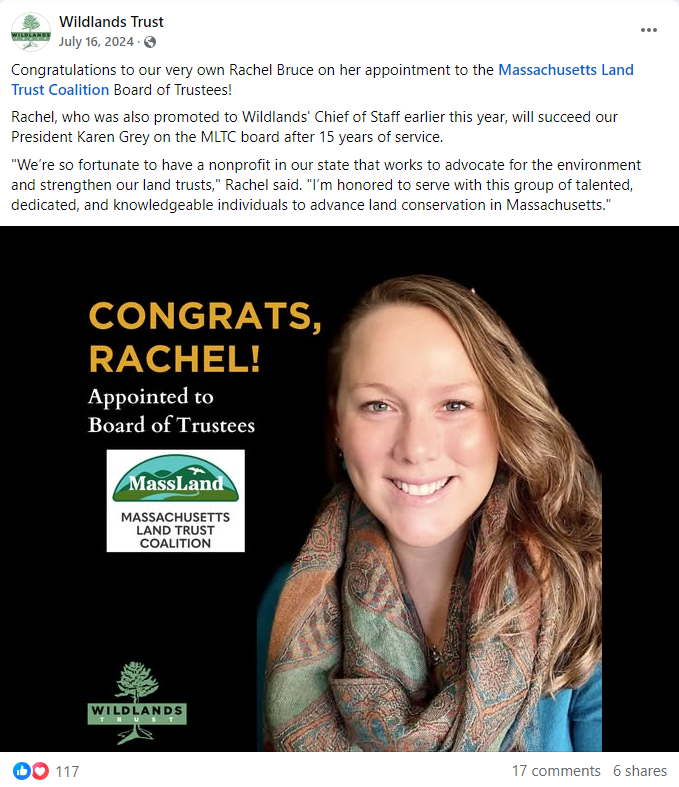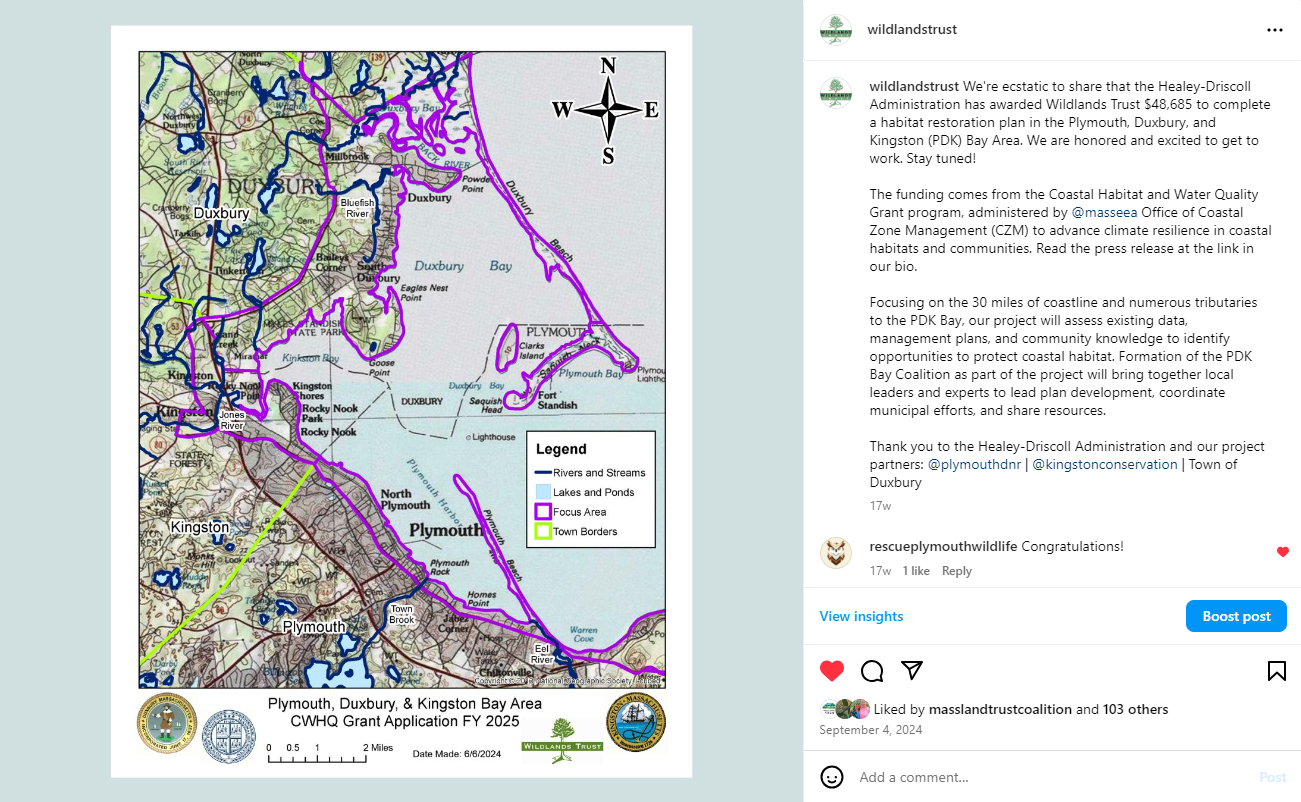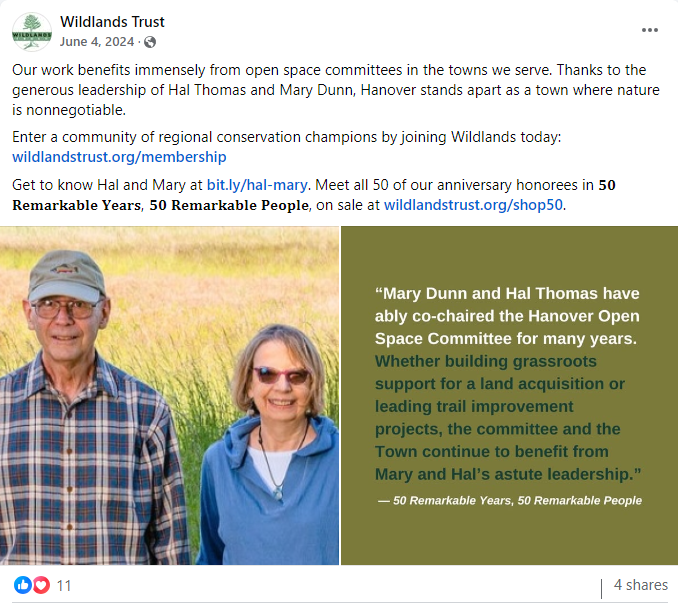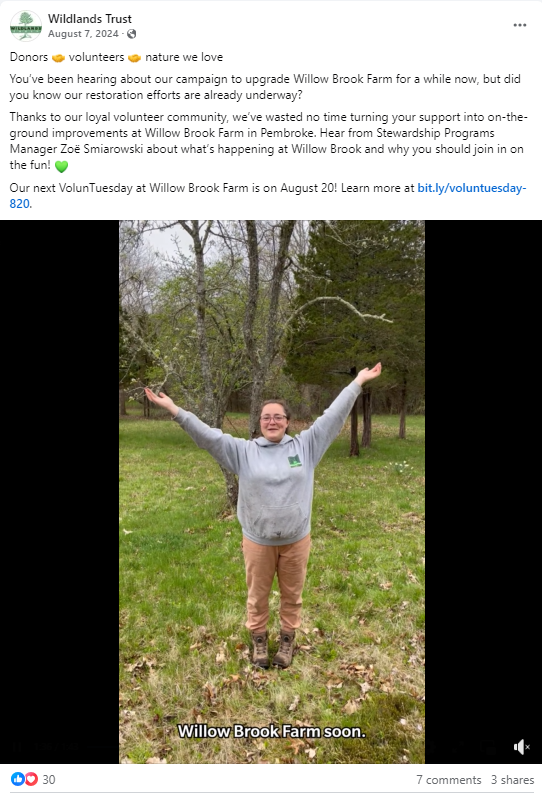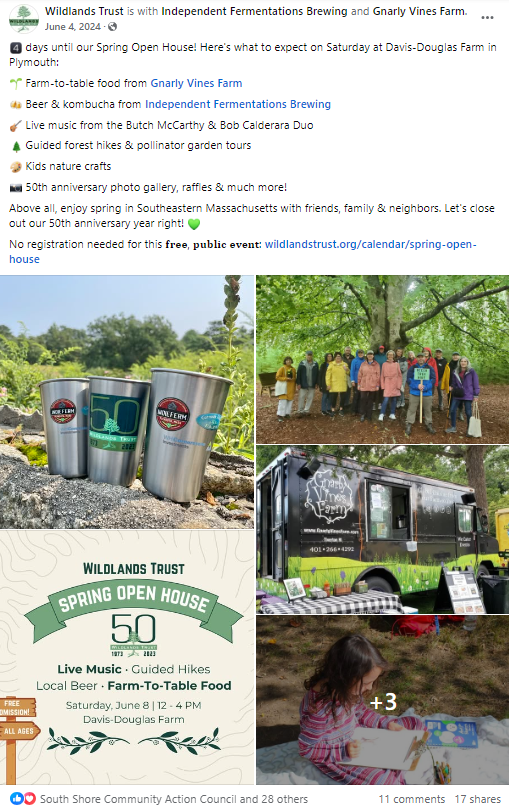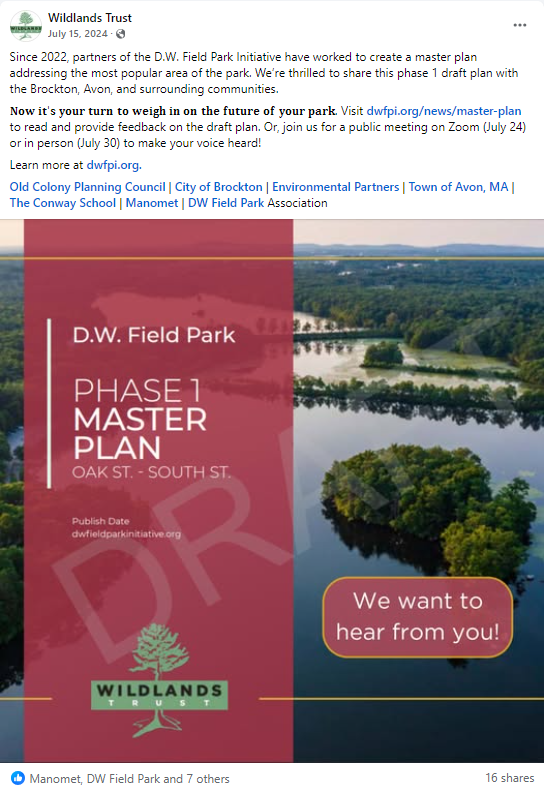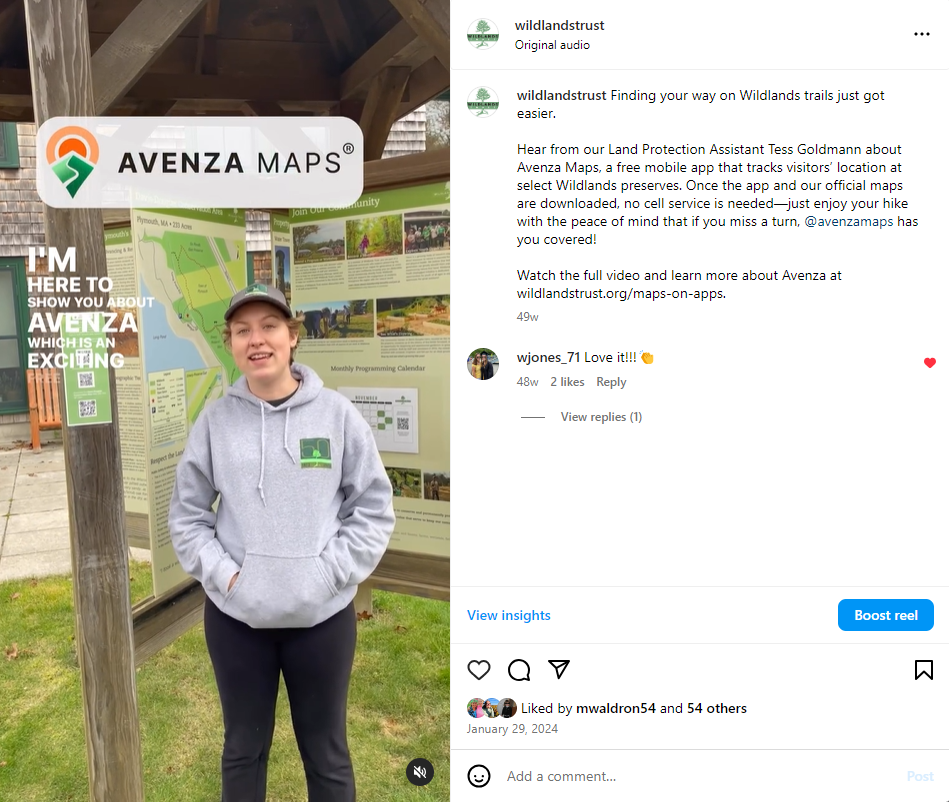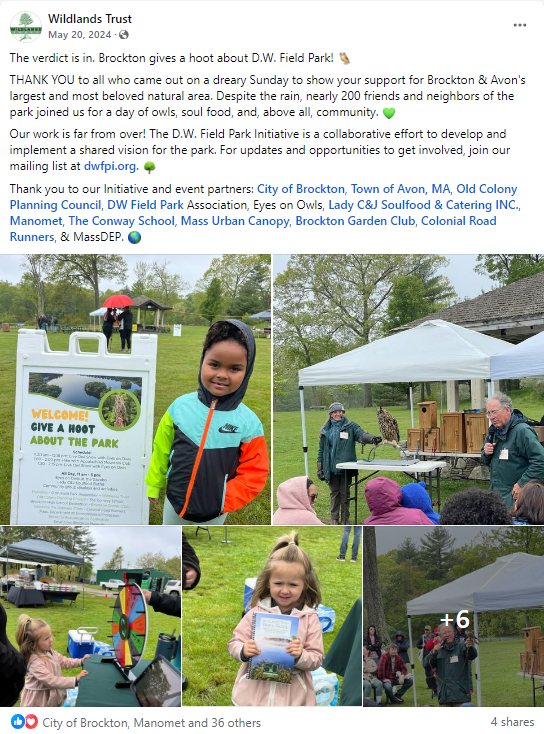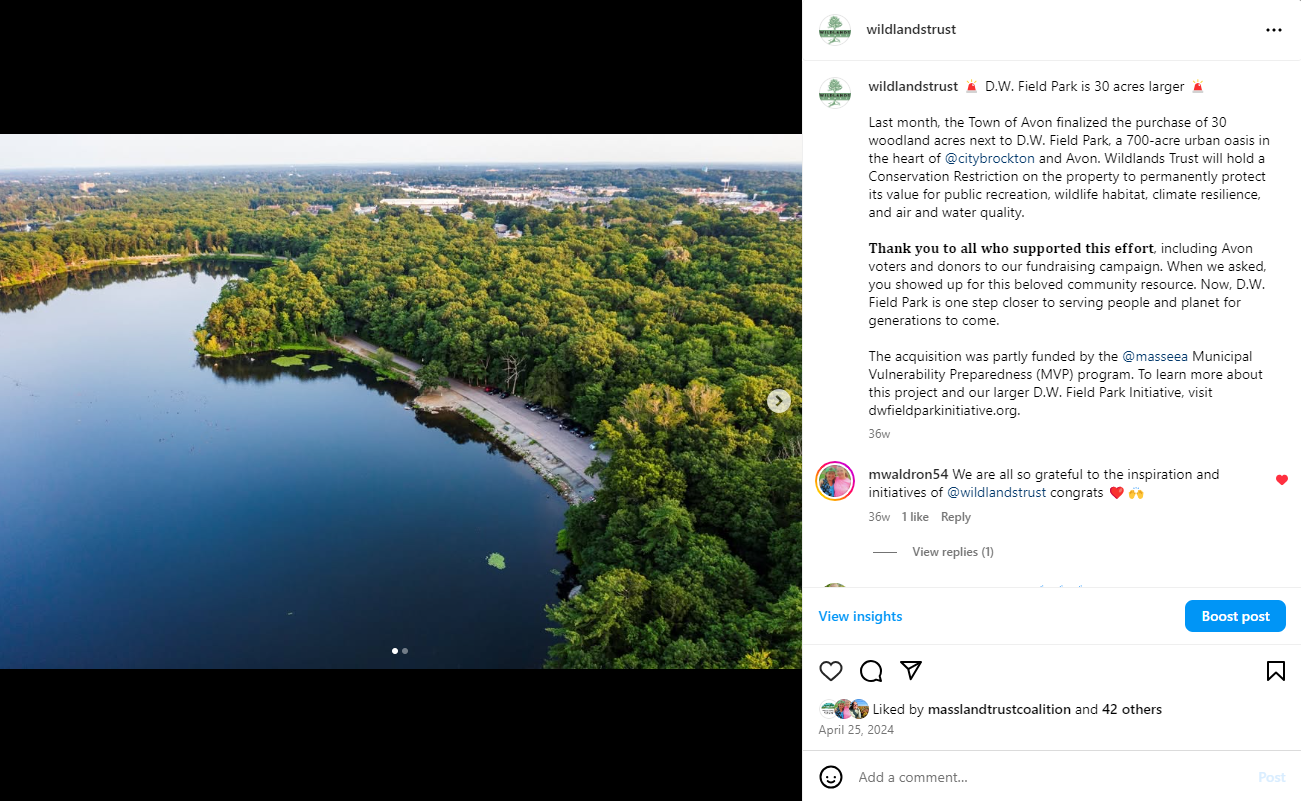Leonard Farm; now the Hiller Farm on the Trustees of Reservations’ East Over Reservation in Rochester. Via the Plumb Library.
By Skip Stuck, Key Volunteer
Wildlands Trust is fortunate to have three preserves in the town of Rochester: two “showcase” preserves, Stephen C. L. Delano Memorial Forest and Rounsville II Preserve, and one “community” preserve, Lincoln P. Holmes Memorial Woods, which, along with an adjacent Town-owned parcel, is known as Doggett's Brook Recreational Area. Together, these preserves comprise nearly 300 acres of protected woodlands, wetlands, streams, and vernal pools.
Like most of Southeastern Massachusetts, Rochester has a rich human history, dating back more than 10,000 years to the retreat of the last glacier and the Native Americans who soon followed to hunt and eventually settle this new land. In what would become Rochester, they found a heavily forested and reasonably flat territory with soils relatively easy to work, but better suited for forests than farming. Nonetheless, the area was well populated by Native peoples who hunted, fished, and farmed small plots by the time of first contact with Europeans. By the early 1600s, the Natives were a band of the Wampanoag Tribe who called themselves Sippicans and the area Menchoisett (or Sippican to the English).
Map of Old Rochester Territory. In Mattapoisett and Old Rochester Massachusetts: Being a History of these Towns and also Part of Marion and a Portion of Wareham (1907).
Old Rochester
When originally settled by the English, Old Rochester included the present towns of Rochester, Mattapoisett, Marion, and a portion of Wareham. More on this later.
The first documented description of the area comes from two sources, both members of the 1602 expedition to the area by Bartholomew Gosnold, who attempted to establish a settlement on nearby Cuttyhunk Island. As they traveled up Buzzards Bay, crew members Brereton and Archer noted seeing many shell middens, small harbors, and "open woods, kept open of underbrush by the Indians." Paradoxically, the "wilderness" often described by early European explorers was from its earliest times a land fully utilized and carefully sculpted by human hands.
Rochester's first property grant from Governor Bradford of the Plymouth Colony was made in 1640. However, it only allowed settlers to negotiate with the Natives and purchase the property from them. Although there was much negotiation, there is little evidence that much land was actually purchased for the next 38 years. Nonetheless, settlers trickled in, first occupying the harbors, ponds, and river bottoms to trade and fish. This all changed following the Natives' defeat in King Philip's War (1675-78), when Indigenous lands became "open by conquest." In 1679, the Colony approved the "Rochester Township Grant," which permitted the small settlements to come together and incorporate a town. Once this finalized in 1686, family farms increased in the area. In 1704, the first corn mill was established in this part of the Colony by the Handy Family.
Fishing, trading, whaling, and shipbuilding also grew in importance, causing rapid growth of the sections of town on Buzzards Bay. Meanwhile, the inland portion of town benefitted from logging and timber production. The Town of Wareham split off from Old Rochester and was incorporated in 1739.
A prosperous area by 1775, Old Rochester gave early support to the campaign for American independence from England, voting to sustain the Continental Congress and support the revolution. In fact, Rochester provided a greater proportion of its men to serve in the war than any other town in Plymouth Colony. One notable Rochester son born in 1792 was Joseph Bates, who went on to found the Seventh-day Adventist Church. Yet Rochester suffered a significant setback in 1816, when its 1,500 residents were hit hard by an epidemic of spotted fever epidemic, a disease associated with typhus and several tick-borne infections.
Town Common, 1880. Via the Plumb Library.
The birth of Rochester Town
The success of the coastal sections of town soon resulted in other areas following Wareham’s lead and splitting off from Rochester: Marion in 1852 and Mattapoisett in 1857. Without these areas, Rochester became a landlocked community and turned its focus to forestry and farming, an agricultural identity it largely retains today. Cranberries, and to a lesser degree livestock and corn production, prevail. It is also a "Right to Farm" community, qualifying with zoning and tax incentives to preserve its farming history.
In keeping with the Town's desire to retain its rural history and character, several families chose in recent years to preserve their properties from development and protect their natural beauty. In 1987, the family of Lincoln P. Holmes donated to Wildlands Trust 100 acres of woodland, which in combination with the Town of Rochester's Doggett Brook property became the Doggett Brook Recreation Area. Less than two miles away, Wildlands acquired two other parcels. In 1985, Susan Delano donated 111 acres of retired wood lot to become the Stephen C.L. Delano Memorial Woods. In 1994, Winnifred Rounsville donated 43 acres to create the Rounsville II preserve. These properties, in addition to the Trustees of Reservations’ Eastover Reservation, combine to make Rochester a great place for hikers and all nature lovers to visit.
Memorial stone at Stephen C. L. Delano Memorial Forest.
Learn more
Visit wildlandstrust.org/rochester to view the full descriptions of our Rochester showcase preserves. Then, explore them for yourself!
Resources for this piece include the Rochester Historical Society, the historical photos collection of Rochester's Plumb Library, and especially the book Mattapoisett and Old Rochester Massachusetts: Being a History of these Towns and also Part of Marion and a Portion of Wareham, published 1907 by Grafton Press.
A brief aside: although the event was mentioned only briefly in this piece, Rochester and surrounding communities played a large part in the most devastating conflict of colonial times, King Philip’s War (1675-1678). I strongly encourage readers to learn more about this event, which has been mentioned in other Wildlands Trust histories. A good starting point is Mayflower: A Story of Courage, Community, and War by Nathaniel Philbrick.















